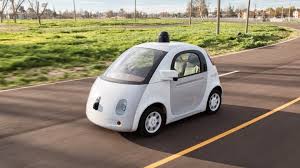Waymo, Google’s self-driving car, is the talk of the automobile industry right now.
This new technology is bringing society to trust companies with their lives by test driving or purchasing in the future when the technology improves. There is no way to prove that there will be improvement in the safety of the cars on the road. Currently, the cars may be too safe right now which will cause an issue to the human drivers behind the wheel.
Once there becomes an integration of self-driving cars, the ratio of self-driving to manually-driving vehicles is expected to reach 50/50. This is where the real issue will occur as humans may become more impatient with the new driverless cars.
According to Digital Trends, “The cars stop for a full three seconds at every stop sign, and try to maintain a wide berth by making turns.” Although this may seem safer, it could bring more frustration to the human drivers as they are still new to the actions of the self-driving cars.
This will be make detecting who is at fault and deserves the consequences of their action, whether it is a self-driving driver or human error, difficult. Communication happens every single day between drivers and pedestrians, which will prove to be the most difficult part if unable to identify natural human cues as a driverless car.
According to the Harvard Business Review, “Unusual, unfamiliar, and unstructured situations (so-called edge cases), such as accidents, road work, or a fast-approaching emergency response vehicle, can be hard to classify. And self-driving systems are not good at detecting and interpreting human cues, such as gestures and eye contact, that facilitate coordination between cars on the road.”
Although there are numerous benefits and goals of having self-driving cars on the road in civilization, the biggest factor is there being less accidents on the road. Presently, the need for futuristic road is necessary as there is an issue of the cars are unable to detect their surroundings on an unpaved or unsafe roads and is changing the way the roads are being done.
This can be with a new traffic road system and improvement of the sensors in the cars surrounding and environment that a GPS can detect. The needs to be a better and more updated detailed mapping system that is consistent with the updates for this to be a safer alternative to human instinct.
Within the Trump Administration’s Department of Transportation, Elaine Chao, United States Secretary of Transportation, stated in the policy innovation release that, “Companies need to step up and address the public’s concerns about safety. Because without public acceptance, the full potential of these technologies may never be realized. Consumer acceptance will be the constraint to the growth of this technology.”
People need to understand that this isn’t perfect technology and we cannot fully trust it, especially from the beginning. Companies must make their consumers completely aware of what the vehicle is aware of before purchasing or being behind the wheel for. We ourselves must be aware of our surrounding in new technology and that even if a car is autonomous.
Taking full responsibility for our actions is not an excuse to be unaware of the environment when behind the wheel. There will be technological errors, just like there are different human errors people make every single day.



































